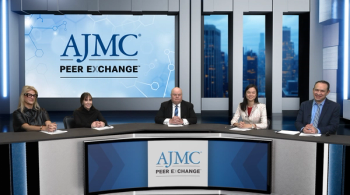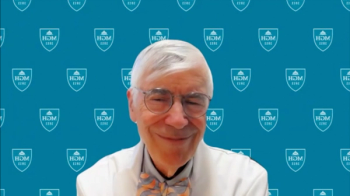
Dr Michelle Booth Discusses Exciting Developments in the Oncology Pipeline
Oncology drugs are a huge driver of cost, but there’s a lot of innovation happening in the space to improve care and outcomes for patients, said Michelle Booth, PharmD, director of specialty clinical solutions at Magellan Rx Management.
Oncology drugs are a huge driver of cost, but there’s a lot of innovation happening in the space to improve care and outcomes for patients, said Michelle Booth, PharmD, director of specialty clinical solutions at Magellan Rx Management.
Transcript
Oncology remains the top category for pharmaceutical spending. What are the big drivers and what else are you seeing in this category?
Oncology is a huge driver of cost, as you said. And why is this happening? There's a lot of excitement here. There's a lot going on in the oncology class. You've got immunotherapy agents that were approved—Keytruda and Opdivo back in 2014. That has changed the landscape significantly, and started to move things away from traditional chemotherapy, which has more side effects and different issues there. These immunotherapies collectively are approved for over 20 different types of cancer. So, serious innovation there, that's really very, very interesting to see develop.
But also, we have a significant number of oral agents that are now approved. Drugs that are able to be managed by the member, by the patient themselves. It gives them a little bit more independence than having to go into the physician office or to an infusion center to receive their treatment.
We also have drugs to treat specific genetic mutations. It's like a more targeted precision medicine here. And we've got testing to get to that mutation, which is really exciting. Kind of drives that more targeted therapy. We're trying to get to a point where we're getting closer to survivorship and remission more quickly. And all these things are very exciting.
Also, we’ll kind of build upon the thought of biosimilars. So, now we have many biosimilar agents that are equivalent to 3 of the big reference products here. So, that's not necessarily changing the treatment options, but it's helping to bring the cost down. Market share is certainly shifting to the lower costing biosimilar agents and plans are very interested in choosing the most cost-effective agent. So, another tool in our toolbox to help bring those costs down.
I will also mention that the pipeline is full of oncology products. There's over 700 drugs in the pipeline over the next 5 years. And a very large portion—like a half to maybe even three-quarters—of that are oral agents. And they're the more targeted therapies like I mentioned we have, which can help to really kind of hone in on the right care for that patient and getting the right drug at the right time to the right patient.
Newsletter
Stay ahead of policy, cost, and value—subscribe to AJMC for expert insights at the intersection of clinical care and health economics.



























































